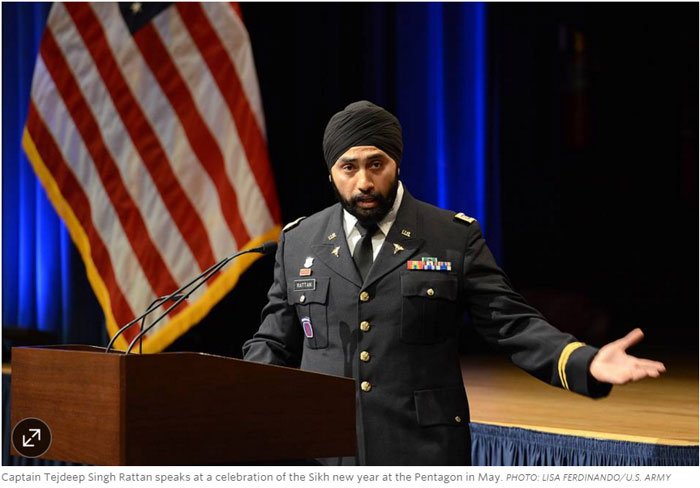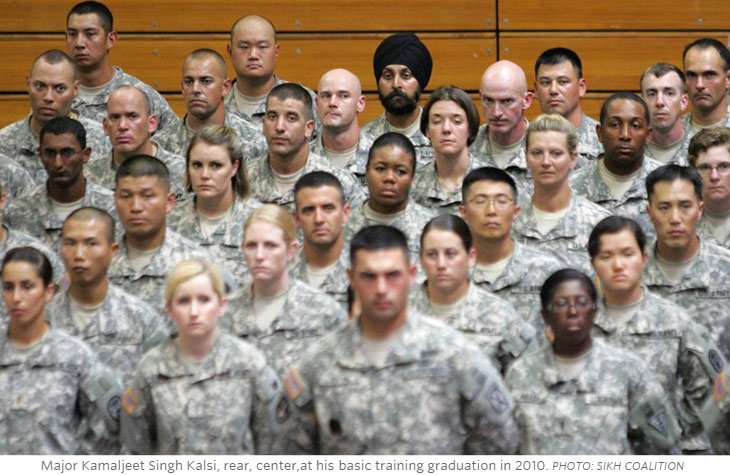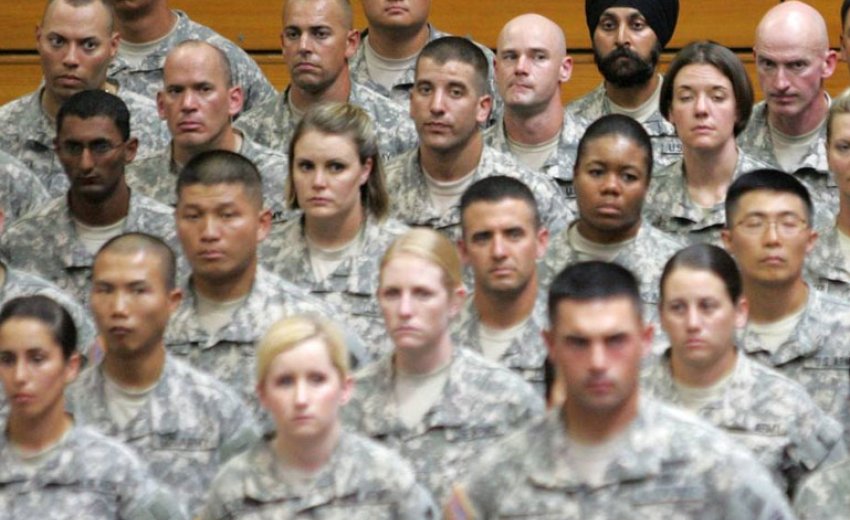Letter to defense secretary says Sikh American's 'should be given equal opportunity to serve'

Sikh Americans have been battling for years to serve in the U.S. military while keeping their turbans and beards—important elements of their South Asian religious faith.
Now, they’ve won some new allies: a group of 27 retired military leaders, including a retired three-star U.S. Army general, have signed a letter that an advocacy group, called The Sikh Coalition, plans to deliver Wednesday to Defense Secretary Ash Carter, saying Sikh Americans “should be given equal opportunity to serve.”
“The U.S. Department of Defense has taken important steps toward recognizing the importance of religious faith to the lives of our service members,” says the letter. “Nevertheless, obstacles remain for patriotic Sikh Americans who wish to serve in our nation’s military while maintaining their articles of faith.”
They are asking that the military find a more reasonable way for Sikhs to serve without going through what they describe as a long, difficult process of getting an exemption. In some cases, a military service branch may require a Sikh to shave his beard and remove his turban while waiting for the exemption.
In the 1980s, the military established regulations that require service members to adhere to uniformity rules about appearance, including hair and grooming standards that prohibit beards and headwear. Those rules are meant to promote unit cohesion and safety, military veterans and officials said.
Sikhs advocating for the change said they understand that the U.S. military must maintain standards or risk opening the floodgates to other religious groups who would demand unique treatment. But Sikhs have found ways to meet the military’s standards despite their turbans and beards, said Amandeep Sidhu, a co-founder of The Sikh Coalition and a lawyer.
“We’ve never wanted to force the armed forces to change,” said Mr. Sidhu. “We want to give them the tools and the evidence that this is the right thing to do.”

The military has made some exceptions based on religious belief. Each military branch can grant religious accommodation requests on a case-by-case basis, according to a Department of Defense spokesman.
“The Department of Defense respects, places a high value on, and supports by policy the rights of members of the Military Services to observe the tenets of their respective religions or to have no religious beliefs,” said Matthew R. Allen, a Defense Department spokesman.
The department “provides to the maximum extent possible for the free exercise of religion by all members of the Military Services who choose to do so,” he said.
Since 2009, the military has allowed three Sikhs to serve in the U.S. military with turbans.
One, Major Kamal Singh Kalsi, was awarded the Bronze Star for his work as the medical officer running the emergency room at Camp Dwyer in Helmand province, Afghanistan in 2011.
Maj. Kalsi, 39, rolled up and pinned his beard tightly under his chin, and wore his long hair under a camouflage turban.
“None of the soldiers I served with really saw or cared about the turban,” said Maj. Kalsi, an ER doctor in New Jersey who is now on active reserve duty. “I was just another soldier.”
When retired Army Lieutenant General Mark Hertling heard that a Sikh might be joining basic training with his turban, he thought “you’ve got to be kidding me, there’s no way,” he recalled.
But Maj. Kalsi, then a Captain, “floored me. I realized I was pretty shallow in my approach of cranking out soldiers,” Lt. Gen. Hertling said, adding that Maj. Kalsi bonded with other soldiers, didn’t need extra time for grooming and could seal a gas mask over his beard.
Lt. Gen. Hertling now supports opening the services to Sikhs, and signed the letter.
Sikhism, a monotheistic religion founded 500 years ago in northern India, has an estimated 25 million followers around the world. They are a tiny minority in the U.S., and are often mistaken for Muslims.
Devout Sikhs, both men and women, don’t cut their hair—one of five articles of faith.
Maj. Kalsi said his accommodation took 15,000 petitioners, 50 congressional signatures and a year and a half “just to get one guy in,”—an onerous process that discourages many Sikh Americans, like his younger brother, also a doctor, from serving, he said.
Write to Tamara Audi at [email protected]
Corrections
& Amplifications:
An
earlier version of this article incorrectly identified a photo of
Tejdeep Singh Rattan. (Nov. 11. 2015)
